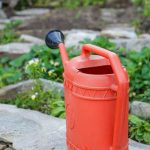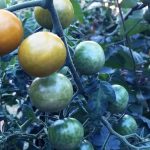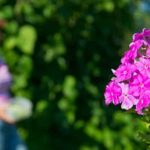Is landscape fabric safe for vegetable gardens? The use of landscape fabric in vegetable gardens has become a popular topic among gardeners. This article will explore the purpose and benefits of using landscape fabric, as well as the factors to consider before making this decision.
The use of landscape fabric in vegetable gardens is a common practice for many gardeners. It is often used as a barrier to control weeds, conserve soil moisture, and regulate soil temperature. However, there are some concerns about whether it is safe to use landscape fabric in vegetable gardens, especially when it comes to potential health risks.
In this article, we will discuss the pros and cons of using landscape fabric in vegetable gardens, including the various types of landscape fabric suitable for this purpose. We will also provide expert recommendations and tips for proper installation and maintenance of landscape fabric in vegetable gardens. Additionally, we will address common misconceptions about landscape fabric and explore alternative methods for weed control in vegetable gardens.
Pros and Cons of Using Landscape Fabric in Vegetable Gardens
Landscape fabric, also known as weed barrier or weed control fabric, is a synthetic material designed to suppress weed growth while still allowing air and water to penetrate the soil. When considering the use of landscape fabric in vegetable gardens, it is important to weigh the pros and cons to make an informed decision for your garden.
One of the main benefits of using landscape fabric in vegetable gardens is its ability to effectively control weeds. By creating a barrier between the soil and the environment, landscape fabric can prevent weed seeds from germinating and competing with vegetables for nutrients. This can ultimately save time and effort in weeding and maintenance, allowing gardeners to focus on other aspects of tending to their crops.
On the other hand, there are some drawbacks to using landscape fabric in vegetable gardens. One concern is that landscape fabric may hinder the natural process of soil aeration and drainage. If not properly installed or maintained, it can lead to water accumulation and root suffocation. Additionally, some types of landscape fabric may break down over time, adding non-biodegradable materials into the soil.
Before deciding whether to use landscape fabric in your vegetable garden, it is important to consider factors such as climate, soil type, and specific needs of your crops. Additionally, it’s essential to choose a high-quality landscape fabric that is suitable for use in vegetable gardens. By carefully evaluating the pros and cons of using landscape fabric, you can make an informed decision that best serves the health and productivity of your vegetable garden.
Factors to Consider Before Using Landscape Fabric in Vegetable Gardens
Soil Health and Nutrient Availability
One important factor to consider before using landscape fabric in vegetable gardens is the impact it can have on soil health and nutrient availability. While landscape fabric can effectively suppress weed growth, it also limits the natural decomposition of organic matter in the soil. This can reduce the availability of essential nutrients for plant growth. Gardeners should assess the nutrient needs of their vegetable plants and consider whether landscape fabric may hinder their ability to thrive.
Moisture Retention and Drainage
Another factor to consider is how landscape fabric affects moisture retention and drainage in vegetable gardens. The use of landscape fabric can help conserve soil moisture by reducing evaporation, which is beneficial during dry periods. However, it may also impede drainage, leading to waterlogged soil in areas with heavy rainfall or overwatering. Gardeners should evaluate the specific moisture needs of their vegetable crops and determine whether landscape fabric will support or hinder those needs.
Potential for Soil Compaction
It is also important to consider the potential for soil compaction when using landscape fabric in vegetable gardens. Continuous use of this material can create a barrier that restricts natural soil aeration and root penetration. This may lead to compacted soil, which can negatively impact plant growth. Gardeners should assess the existing soil structure and consider whether the use of landscape fabric will contribute to or alleviate issues related to compaction.
By carefully considering these factors, gardeners can make informed decisions about whether landscape fabric
Types of Landscape Fabric Suitable for Vegetable Gardens
When considering using landscape fabric in your vegetable garden, it is important to choose the right type of fabric that will provide the best benefits without harming your plants or soil. There are several types of landscape fabric suitable for vegetable gardens, each with its own unique features and advantages. Here are some options to consider:
- Woven Landscape Fabric: This type of fabric is strong and durable, making it ideal for use in vegetable gardens where it will be subjected to regular foot traffic and maintenance activities. Woven landscape fabric allows water, air, and nutrients to penetrate the soil while effectively suppressing weed growth.
- Non-Woven Landscape Fabric: Non-woven fabric is designed to provide excellent weed control while still allowing for proper water and air permeability. This type of fabric is often preferred for vegetable gardens due to its ability to maintain soil moisture and prevent erosion.
- Biodegradable Landscape Fabric: For those concerned about the long-term environmental impact of using landscape fabric, biodegradable options are available. These fabrics break down over time, adding organic matter to the soil and reducing the need for removal or disposal.
It is important to carefully consider which type of landscape fabric will best suit your specific needs and gardening practices. By selecting the right type of fabric for your vegetable garden, you can ensure that it provides effective weed control while still supporting the health and vitality of your plants.
How to Properly Install and Maintain Landscape Fabric in Vegetable Gardens
When it comes to installing and maintaining landscape fabric in vegetable gardens, there are a few key steps to keep in mind to ensure its effectiveness. Firstly, it is important to properly prepare the soil before laying down the fabric. This includes removing any existing weeds, rocks, and debris, as well as leveling the ground for an even surface.
Once the soil is prepared, carefully lay the landscape fabric over the garden area, ensuring that it covers the entire space where you want to control weed growth. Secure the fabric in place using landscaping pins or staples to prevent it from shifting or being blown away by strong winds.
In terms of maintenance, regularly inspect the landscape fabric for any signs of damage or wear. If you notice any tears or holes, make sure to patch them up promptly to prevent weed growth from penetrating through. Additionally, consider adding a layer of organic mulch on top of the fabric to provide further protection and insulation for your vegetable plants.
It is essential to use a high-quality landscape fabric that is specifically designed for use in vegetable gardens. Look for fabrics that are permeable and allow water and nutrients to reach the soil while blocking out sunlight to inhibit weed growth. Taking these steps will help ensure that your landscape fabric effectively suppresses weeds without compromising the health and safety of your vegetable garden.
| Pros | Cons |
|---|---|
| Provides effective weed control | May require additional maintenance |
| Helps retain moisture in the soil | Can be more expensive upfront |
| Reduces the need for chemical herbicides | May restrict root growth if not properly installed |
Common Misconceptions About Landscape Fabric and Vegetable Gardens
There are several misconceptions surrounding the use of landscape fabric in vegetable gardens. One common misconception is that landscape fabric restricts the growth of beneficial organisms in the soil.
While it is true that some types of landscape fabric can hinder the movement of water, air, and nutrients in the soil, there are breathable options available that allow for sufficient airflow and water penetration. Additionally, landscape fabric can actually help prevent erosion and soil compaction, ultimately creating a healthier growing environment for vegetables.
Another misconception is that landscape fabric is not environmentally friendly. Some gardeners believe that using synthetic materials like landscape fabric can harm the ecosystem. However, there are biodegradable options on the market that break down over time and do not contribute to pollution. It’s important to carefully select a landscape fabric that aligns with your environmental values and goals for your vegetable garden.
Furthermore, there is a misconception that landscape fabric does not effectively control weeds in vegetable gardens. While it is true that no weed control method is completely foolproof, using landscape fabric significantly reduces the amount of manual weeding required throughout the growing season. Combined with proper installation and maintenance, landscape fabric can be an effective tool for minimizing weed growth in vegetable gardens.
| Consideration | Key Information |
|---|---|
| Soil Health | Choose breathable landscape fabric to promote airflow and nutrient exchange |
| Environmental Impact | Opt for biodegradable landscape fabric options to minimize ecological harm |
| Weed Control | Landscape fabric significantly reduces manual weeding efforts in vegetable gardens |
Alternative Methods to Landscape Fabric for Weed Control in Vegetable Gardens
While landscape fabric can be an effective method for weed control in vegetable gardens, some gardeners may prefer alternative methods for a variety of reasons. One popular alternative to landscape fabric is mulching with organic materials such as straw, wood chips, or shredded leaves. Mulch not only suppresses weed growth by blocking sunlight, but it also helps retain moisture in the soil and adds organic matter as it breaks down.
Another alternative method for weed control in vegetable gardens is using cardboard or newspaper as a barrier under mulch. This approach is similar to landscape fabric in that it suppresses weeds by blocking sunlight, but it is biodegradable and adds nutrients to the soil as it breaks down. Additionally, cardboard and newspaper are readily available, inexpensive, and environmentally friendly options for weed control.
Some gardeners also choose to use manual weeding techniques as an alternative to landscape fabric. While this method requires more labor and ongoing maintenance, it allows for greater flexibility in managing weed growth and can be more sustainable in the long term. Regularly inspecting the vegetable garden and manually removing weeds by hand or using gardening tools can be an effective way to control weeds without relying on synthetic materials.
Ultimately, selecting the most suitable weed control method for a vegetable garden depends on various factors such as personal preference, budget, environmental concerns, and specific gardening conditions. Each alternative method has its own benefits and drawbacks, so it is important for gardeners to carefully consider their options before making a decision on how to manage weeds in their vegetable garden.
Expert Recommendations and Tips for Using Landscape Fabric in Vegetable Gardens
Choose the Right Type of Fabric
When considering landscape fabric for your vegetable garden, it is important to choose the right type of fabric. Look for a fabric that is specifically designed for use in edible gardens, as some fabrics may contain harmful chemicals that can leach into the soil and affect the quality and safety of your produce.
Proper Installation and Maintenance
It is crucial to properly install and maintain landscape fabric in your vegetable garden. Make sure to lay the fabric down before planting your crops, creating holes for each plant. This will help prevent weed growth while still allowing water to reach the soil. Regular maintenance such as checking for tears or shifting of the fabric will ensure its effectiveness throughout the growing season.
Considerations for Soil Health
Before using landscape fabric in your vegetable garden, consider how it may impact the health of your soil. While landscape fabric can effectively suppress weeds, it may also hinder the natural decomposition of organic matter in the soil. It is important to monitor the soil’s nutrient levels and microbial activity to ensure that landscape fabric is not negatively impacting the overall health of your garden.
Overall, when used correctly, landscape fabric can be a beneficial tool for weed control in vegetable gardens. By selecting the right type of fabric, installing and maintaining it properly, and monitoring its impact on soil health, you can make an informed decision about whether landscape fabric is safe for your vegetable garden.
Conclusion
In conclusion, the decision to use landscape fabric in your vegetable garden ultimately depends on weighing the pros and cons and considering various factors. While landscape fabric can effectively suppress weeds and conserve moisture, it is important to carefully choose the right type of fabric suitable for vegetable gardens. Proper installation and maintenance are also crucial for maximizing the benefits of landscape fabric while minimizing potential drawbacks.
It is essential to dispel any misconceptions about landscape fabric in vegetable gardens, such as concerns about chemical leaching or inhibiting beneficial soil organisms. By using high-quality, permeable landscape fabric and following expert recommendations for installation and maintenance, you can ensure that your vegetable garden will thrive while effectively controlling weed growth.
If you decide that landscape fabric may not be the best option for your vegetable garden, there are alternative methods for weed control to consider. These alternatives include organic mulches, hand-weeding, or using cover crops to smother weed growth. Ultimately, making an informed decision about whether to use landscape fabric in your vegetable garden involves considering your specific needs, environmental impact, and long-term goals for your garden.
Frequently Asked Questions
Can I Use Landscape Fabric in My Vegetable Garden?
Using landscape fabric in a vegetable garden can be beneficial in terms of weed control and moisture retention. However, it is important to choose a breathable fabric and ensure proper installation to prevent any negative impact on the soil and plant growth.
Does Landscape Fabric Leach Chemicals Into the Soil?
Landscape fabric, if made from synthetic materials, has the potential to leach chemicals into the soil over time. This can have detrimental effects on the plants and may contaminate the produce. It is crucial to research and select a non-toxic fabric for use in vegetable gardens.
What Is the Best Fabric for a Vegetable Garden?
The best fabric for a vegetable garden is one that allows air, water, and nutrients to penetrate while effectively suppressing weed growth. Natural fabrics like burlap or organic mulch can be good options as they are biodegradable and do not pose chemical leaching risks to the soil. Ultimately, choosing the right fabric depends on individual garden needs and preferences.

If you’re looking to get into vegetable gardening, or are just looking for some tips on how to make your current garden better, then you’ve come to the right place! My name is Ethel and I have been gardening for years. In this blog, I’m going to share with you some of my best tips on how to create a successful vegetable garden.





